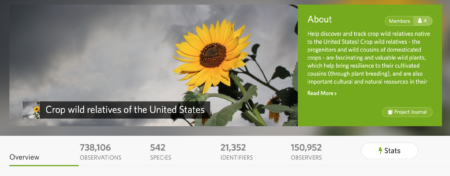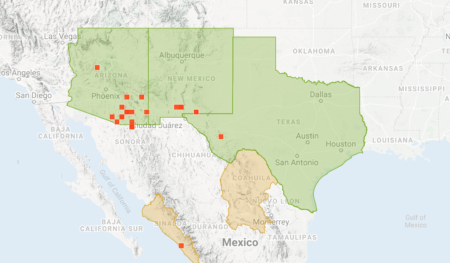- 5 suggestions for scientists on social: see & be seen, select & specialize, serve, socialize, strategize.
- Open call to berry breeders.
- Another genebank for Australia makes a splash.
- How to avoid a repeat of the whole Enola bean story.
Nibbles: Dates, Patagonian berries, Wild edibles, Barley breeding, African grains, Tea & CC, Grapes
Brainfood: Filbert genome, Weed evaluation, Cocoa bugs, Grass genes, Perennial ag, Forage quality, Forest gardens, Protected areas, Anthropocene, Pollinators, Neolithic burials, House mice
- The Corylus mandshurica genome provides insights into the evolution of Betulaceae genomes and hazelnut breeding. Yeah, but can it make Nutella better?
- Widely assumed phenotypic associations in Cannabis sativa lack a shared genetic basis. More work needed. Much more work.
- Dissecting industrial fermentations of fine flavour cocoa through metagenomic analysis. There’s a core of microorganisms in common even in very distant farms. Though I suspect the fun will be in the others.
- Widespread lateral gene transfer among grasses. Especially in rhizomatous species. That should relieve the anxiety about genetic modification, right? Right.
- An agroecological vision of perennial agriculture. Wait, what about those rhizomatous perennial grasses, though?
- Comparison of benchtop and handheld near‐infrared spectroscopy devices to determine forage nutritive value. The handheld devices are just fine. How long before Alice asks Chris for some for the ILRI genebank? To test on rhizomatous grasses, of course.
- Historical Indigenous Land-Use Explains Plant Functional Trait Diversity. Forest gardens in the Pacific NW still have more diversity 150 years after their indigenous managers were forced off them.
- The minimum land area requiring conservation attention to safeguard biodiversity. 44% of terrestrial area, home to 1.8 billion people. Presumably including a lot of indigenous managers.
- People have shaped most of terrestrial nature for at least 12,000 years. 75% of terrestrial area, in fact.
- Protection of honeybees and other pollinators: one global study. Focus on habitat loss and pesticides. And more monitoring.
- A sexual division of labour at the start of agriculture? A multi-proxy comparison through grave good stone tool technological and use-wear analysis. Guess which gender was buried with tools associated with interpersonal violence.
- Origins of house mice in ecological niches created by settled hunter-gatherers in the Levant 15,000 y ago. Well, hence the name, right?
- Commentary: Underestimating the Challenges of Avoiding a Ghastly Future. Don’t warn. Resist.
Brainfood: Lettuce, Little millet, Finger millet, Rice, Maize, Apple, Brassicas, Onions, Grapevine, Tomato, Sheep, Species diversity, Genetic diversity
- Whole-genome resequencing of 445 Lactuca accessions reveals the domestication history of cultivated lettuce. Originally domesticated in the Caucasus, for oil, and then a long, slow wander westward. But so much more to it…
- Variability and trait‐specific accessions for grain yield and nutritional traits in germplasm of little millet (Panicum sumatrense Roth. Ex. Roem. & Schult.). From 200 accessions to 5 both high yielding and rich in Ca.
- Genomic and phenotypic characterization of finger millet indicates a complex diversification history. Wait, East Africa is the least genetically diverse area?
- Portrait of a genus: the genetic diversity of Zea. There has been convergent adaptation in high altitude teosinte and high latitude (temperate) maize.
- Genetic diversity of African wild rice (Oryza longistaminata Chev. et Roehr) at the edge of its distribution. The Ethiopian material is special.
- Candidate genes and signatures of directional selection on fruit quality traits during apple domestication. Fruit colour and taste genes lose diversity during domestication.
- The Evolutionary History of Wild, Domesticated, and Feral Brassica oleracea (Brassicaceae). B. cretica is the closest wild relative.
- Brassica rapa domestication: untangling wild and feral forms and convergence of crop morphotypes. The truly wild stuff comes from the Caucasus, Siberia and … Italy. But it all goes back to turnips in the Hindu Kush.
- ‘Neodomesticates’ of the Himalayan allium spices (Allium species) in Uttarakhand, India and studies on eco-geography and morphology. Gotta know your onions.
- Multiple independent recombinations led to hermaphroditism in grapevine. The switch from dioecious to hermaphroditic flowers happened two times in the last 6000 years, but before domestication.
- Revitalization of the Greek Vitis database: a multimedia web-backed genetic database for germplasm management of Vitis resources in Greece. Welcome back!
- Participatory Plant Breeding and the Evolution of Landraces: A Case Study in the Organic Farms of the Collserola Natural Park. From 80 plants of the Mando tomato landrace to over 2000.
- Evidence for early dispersal of domestic sheep into Central Asia. Sheep were being kept in the Ferghana Valley 3000 years earlier than thought.
- A metric for spatially explicit contributions to science-based species targets. Sustainable crop production and forestry in Indonesia, Colombia, Mexico, Madagascar and Brazil would make a hell of a difference.
- Conserving intraspecific variation for nature’s contributions to people. Oh good, I’m glad somebody thought of this.
Citizens map crops and their wild relatives
Our friend and occasional contributor Colin Khoury has made a “project” on iNaturalist focusing on the crop wild relatives found in the USA.

iNaturalist collates and manages citizen science observations of living things, with a machine learning algorithm helping with species identification. If the observation you document on your phone app gets verified by two other people, it’s rated as “Research Grade,” and included in GBIF.
Colin also had a go at pulling together observations on major food crops, though there’s no way of including only observations of cultivated material. This is a map of tepary beans (Phaseolus acutifolius), for example.

Cool, no? Join in! There’s only one observation of Bambara groundnut. Surely we can do something about that.